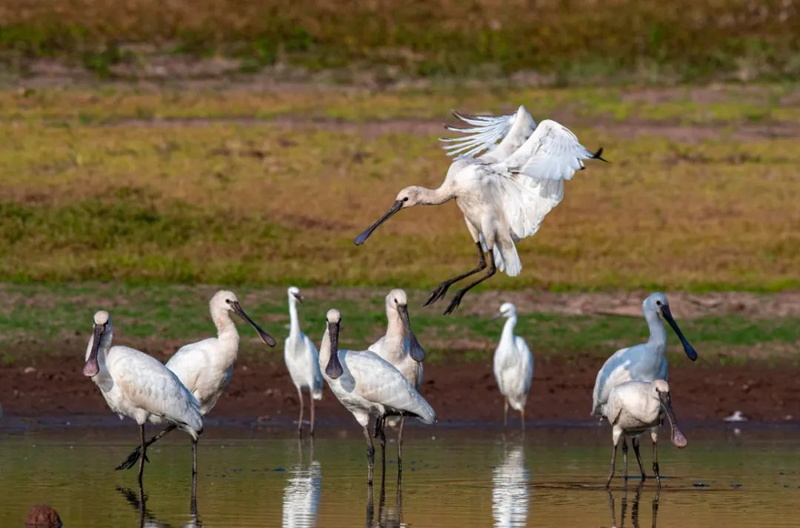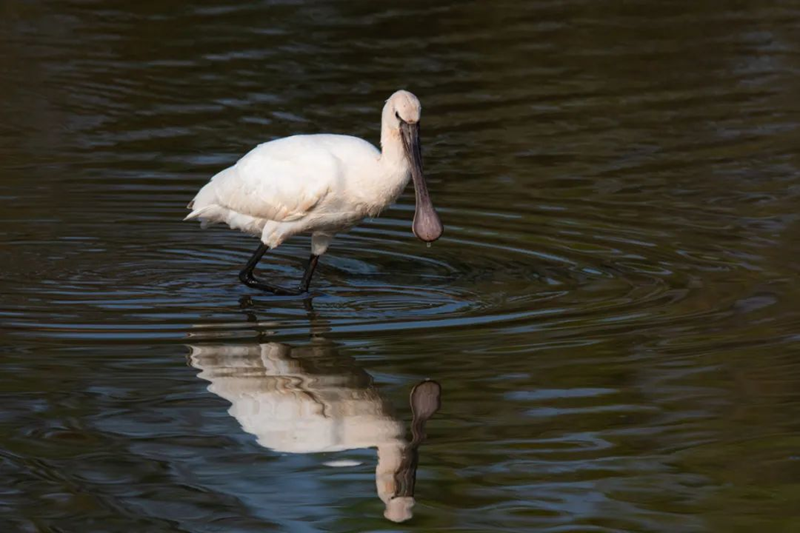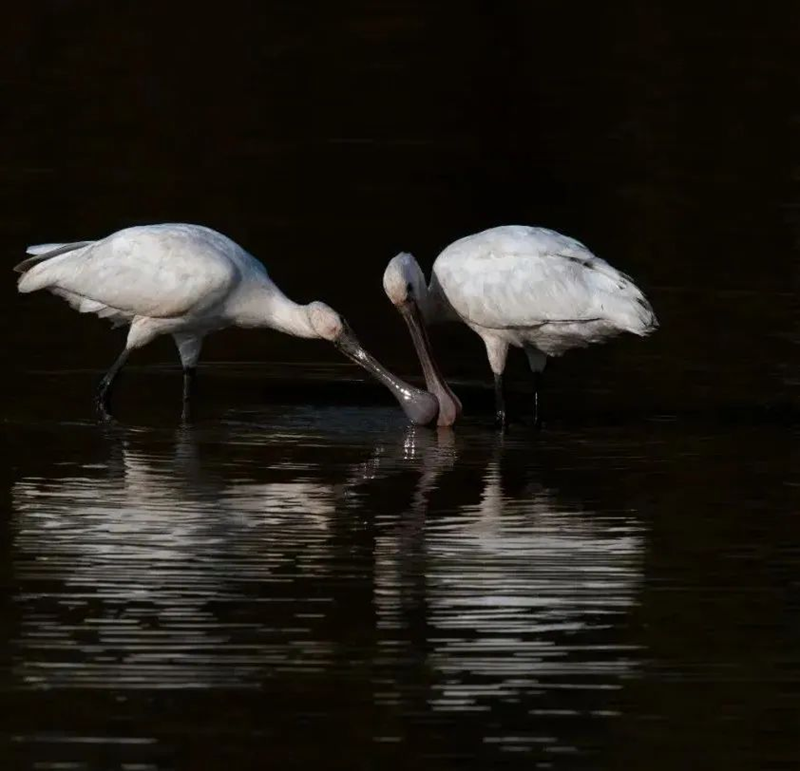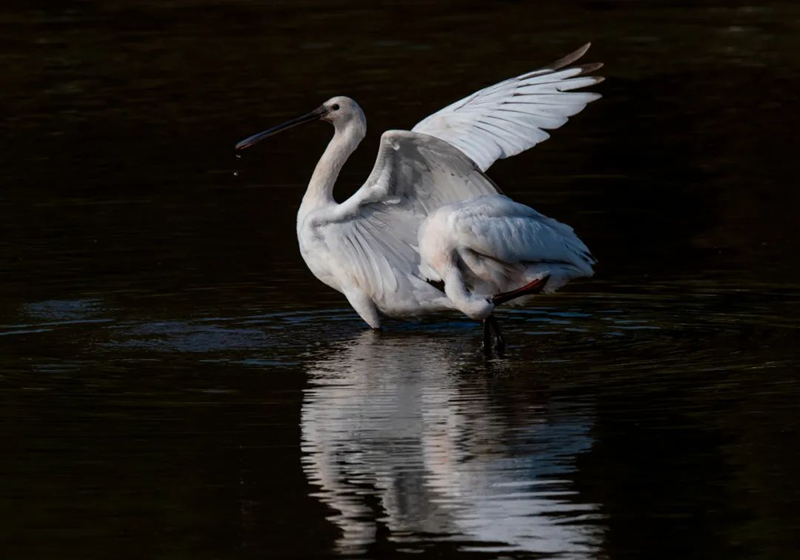36 White Spoonbills were first found in Shixing County,Shaoguan
On the morning of October 24, on the way to the countryside, officials from the Mashi township government found a group of "big birds" foraging on the mudflat of a pond. Zhang Qiang, associate researcher and deputy director of the Institute of Zoology of the Guangdong Academy of Sciences, identified the birds as white Spoonbill, a national second-class protected animal. This is the first time that white Spoonbills were found in Shixing County.

In the area where the white spoonbill was found, many photographers were taking pictures of the white spoonbills.

In total 36 white spoonbills were found in the area. Spoonbill has long black bill with flat end, which is similar to the Pipa, a traditional Chinese musical instrument. Its feet are black and feathers are white.

Some spoonbills were foraging on the mudflat, while some were flying in the sky. There were times they stopped and preened their feathers, with their graceful posture being reflected on the water, making the glistening water look more lively.

The local township officials who found this group of white spoonbills introduced that they thought they were egrets at first sight. "We saw them when we were on our way to the countryside yesterday morning. We didn't pay much attention to them at first. We thought they were a group of egret-like birds, which were very beautiful." But after looking closer, the birds did not look like egrets, especially their mouths are different, so they took photos of the birds, said Peng Jian, an official of the Mashi township government.




The pictures of the birds were sent to Zhang Qiang, the associate researcher and deputy director of the Institute of Zoology of the Guangdong Academy of Sciences. Zhang checked the pictures and confirmed that the birds were white spoonbills, a national second-class protected animal.
Spoonbills are tall white waterbirds with long spatulate black bills and long black legs. Spoonbill is a national second-class protected animal. Because of its white feather and body shape are similar to egret, so spoonbill is called "Lu (Chinese name of heron)" too.


The main habitats of the white spoonbills are Inner Mongolia and Xinjiang. Most birds migrate south in the winter to the lower reaches of the Yangtze River, Jiangxi province, Guangdong province, Fujian province, Taiwan and other southeastern coastal islands.

"These 36 white spoonbills are believed to have stopped by Shixing county to rest and find food on their migration journey." Zhang Qiang said. Shixing county is located in Nanling Mountains area, where a large number of migratory birds pass through every year in September and October from the north of China or the Far East. Adding that the local forest ecosystem is well preserved, a great variety of pools, rivers and wetlands are ideal places for these birds to rest and find food.

Shixing county has been continuously strengthening the construction of ecological civilization, with great progress having been made in environmental protection. In recent years, with the increased efforts in ecological protection and people’s better awareness of the importance of environmental protection, the number of migratory birds observed in Shixing county has been increasing. In January 2021, 11 white cranes, which are under first-class state protection, were found for the first time in Shixing. This year, the visiting of the white spoonbills once again reflected that the local ecological environment is under continuous improvement.


